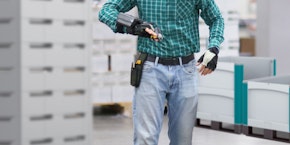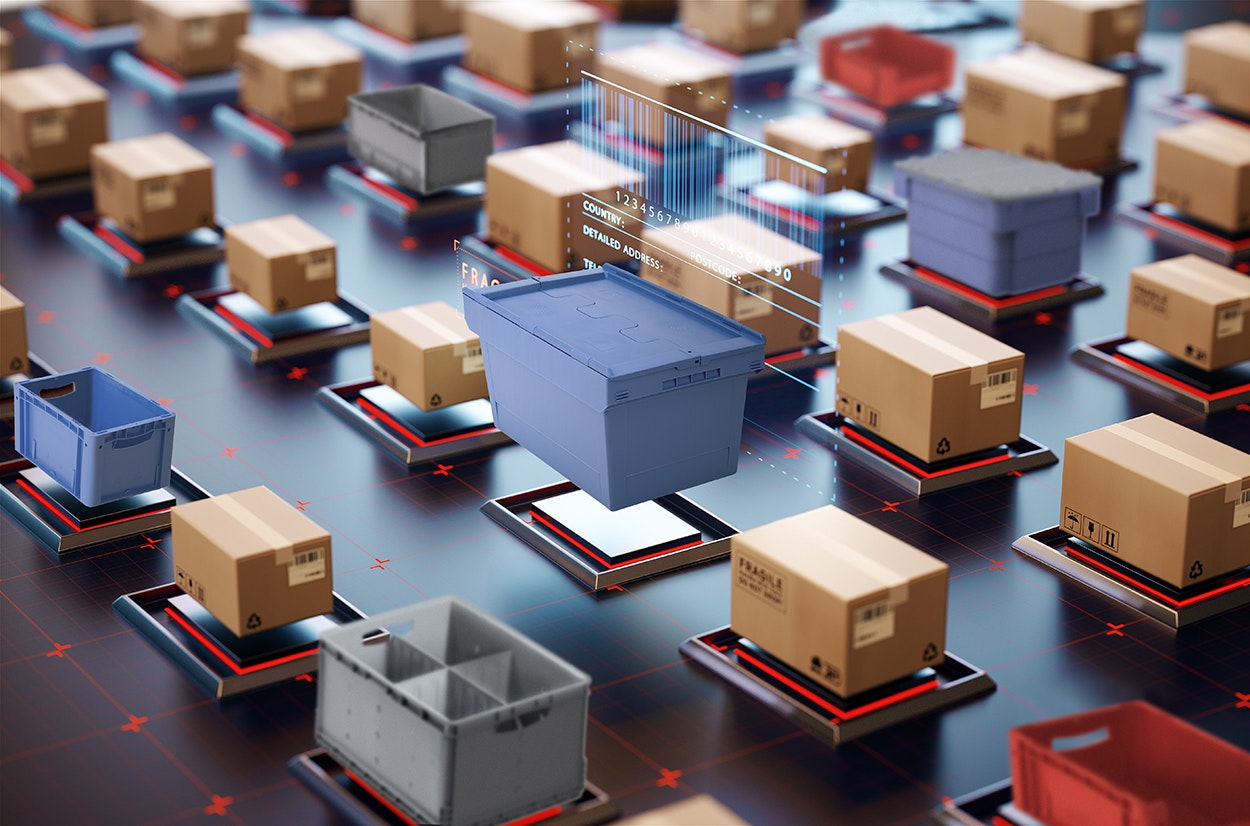Wearables offer super strength in the world of logistics

Logistics is about to undergo another revolution, which will only become possible through digitisation and Industry 4.0. So-called wearables are about to enter the world of logistics.
According to the Gabler Business Encyclopedia, "Wearables are computer technologies that you wear on your body or head. They are a concretisation of ubiquitous computing and part of the Internet of Things. They also speak of wearable technology and wearable computers. The purpose is usually to support an activity in the real world, for example with (additional) information, evaluations and instructions."
The Internet of Things (IoT) refers to the networking of objects with the Internet so that these objects can communicate independently via the network and thus perform various tasks for the owner. After all, the IoT can be seen as the heart of Industry 4.0 and Logistics 4.0, with which the digitisation of industry is being promoted.
Wearables on the advance
Wearables play an increasingly important role in industry and logistics, especially in the healthcare sector. The American market analysis and consulting company ABI Research divides the market for wearables into seven segments: cameras that can be worn on the body or helmet, Smart Cloth (also known as E-Cloth), Smart Glasses (data glasses), such as from Vuzix, Epson (Moverio) and Google, medical technology in healthcare, sports and fitness trackers (recording devices), 3D motion trackers such as Microsoft Kinect with SoCs from Apple's new subsidiary Primesense and smartphone compatible watches (Smart Watches) such as Samsung Galaxy Gear or Sony Smartwatch. In logistics and intralogistics, data glasses, finger scanners, scanner gloves, exoskeletons for carrying heavy loads, mobile and portable printers and body sensors for analyzing motion sequences in the warehouse (motion miners) are already being used.
Exoskeletons: Working like in the Elysium
In 2013, in the scifi drama "Elysium" with Matt Damon, exoskeletons have already arrived in the working world today. They are designed to ergonomically support the wearer when lifting heavy loads or working in uncomfortable positions, e.g. overhead. For example, BMW in Spartanburg is already using exoskeletons in automobile production to support its employees in the overhead assembly of components. The exoskeleton supports the upper arms of the wearer, who thus becomes less tired and experiences less tension in the neck, shoulders, arms and back. The use of exoskeletons, in particular back support exoskeletons, for carrying (heavy) loads is also possible in the warehouse. Via IoT, data on the operating status of the device is then transferred to a software program, e.g. for diagnostic and maintenance purposes.
Data glasses: A Terminator View
Picking with Google Glasses or data glasses clearly saves time. The employee has his hands free and can concentrate on ergonomic, safe and fast movements. In the picking process, also known as Pick-by-Vision, the employee is guided step by step through his picking order. The data is transmitted in real time. However, the Google glasses first had to be made suitable for industrial use. With the quick-change mechanism for spectacle and safety lenses with and without prescription according to EN166, the head-mounted displays simply adapt to the user. The Augmented Reality glasses allow easy scanning of 1D and 2D barcodes. In addition, a Bluetooth ring scanner is often used to prevent deep bending or stretching due to hard-to-reach barcodes.
Finger Scanner: Lord of the Rings
Bluetooth ring scanners can easily be worn on one or more fingers. The wireless data transmission gives the user great freedom of movement. The scanware no longer has to be handed over, but can, for example, be catalogued during unloading or loading. The removal and stowage of barcode scanners & Co. is also eliminated with this Wearable. The ring scanner not only helps you to have your hands free, it also saves valuable time. However, the scanning performance depends strongly on the software. A long-lasting battery and an integrated display are also important.
Connecting Two Worlds: Glove Scanner
Another variant is the integration of the barcode scanner on the back of a glove. Here a lot of time can also be saved with the scanner application. The employee's hands are free, triggering the scanner by pressing the index finger and thumb together. After aiming at the object, he immediately receives an optical and haptic (vibration) feedback. It is generally a matter of shortening the constantly recurring process of recording and making it more ergonomically pleasant.
Mobile labelling directly on site
With the use of mobile, portable printers, errors can be avoided in the healthcare sector, for example. Samples can be labelled directly at the treatment site. The use of these devices in corporate logistics and intralogistics is also almost unlimited: goods receipt, retrieval, reverse logistics, inventory management, inventory, picking, provision, packing, shipping, proof of delivery and pick-up, fleet management, and much more... So many business processes can be optimised with it. There are printers with which the user can print on almost any material.
Ergonomic with Motion Miners
Motion miners can be used to automatically analyze and optimize motion sequences in logistics and industrial environments in companies. It is not only a question of whether work processes run optimally, but also whether the relevant employees move ergonomically. Workers are equipped with appropriate sensors which provide information on movements, posture, where they are and also on ambient conditions (e.g. lighting). Weak points should be uncovered, costs reduced and manual effort reduced in order to achieve the greatest possible ergonomics of movement.
Use of Virtual Reality not only for computer games
One of the latest developments in intralogistics is the use of Virtual Reality (VR) in employee training. The first suppliers of warehouse management systems have recently started using VR to train warehouse employees in the new introduction of their software packages. Here the warehouse environment in which the employees will work in the future will be mapped in virtual space. The original dialogues and displays of the warehouse management system are also integrated. The order picker or forklift driver moves in the virtual environment, removes packages and places them on the future order picking trolley and performs the scanning processes. This technology offers clear advantages not only when introducing a new system. This also saves time and money for the induction of new employees during operation and increases the quality of the work.


